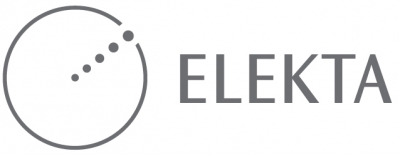A precise functional imaging technique for epilepsy
When video-EEG monitoring is unable to pinpoint the epileptogenic zone, or when the results are not entirely concordant with other structural and functional tests, another method for recording and localizing neural signals may clarify the origin of the epileptic discharges. This non-invasive alternative, magnetoencephalography (MEG), measures magnetic fields generated within the brain and recordable from outside the head, unimpeded by tissue boundaries such as meninges, skull and scalp. The results of electroencephalography can be especially confusing when the patient has undergone a previous neurosurgical procedure, whereas MEG is not influenced by alterations or abnormalities of the skull or alterations of the parenchymal anatomy.
While other modalities infer brain function indirectly by measuring changes in blood flow, metabolism, oxygenation, etc., MEG, together with EEG, measures neuronal and synaptic function directly. The magnetic equivalent of EEG, MEG is a direct electrophysiological measure of neural function that records the magnetic fields just outside the scalp on a millisecond-by-millisecond basis. Because the MEG helmet surrounding the patient’s head has hundreds of sensors, and the magnetic field is not distorted by skull or other boundaries, this modality has greater localization accuracy than EEG and indicates more precisely where neural activity is originating.
Because of its complementary role in the workup of patients with epilepsy, MEG has had a high impact on treatment decisions in many cases. Although MEG may not be able to replace invasive EEG recordings, its use may guide the placement and tailor the design of intracranial investigations, and in some patients obviate unnecessary invasive evaluations.
This webinar is aimed at physicians engaged in the evaluation of patients with epilepsy who would like to learn more about the use of MEG. Specifically, the program is tailored for physicians considering referral of their patients for a MEG study or who are simply curious about the current state of the art.
Presented by

Richard C. Burgess, MD, PhD,
Director, Magnetoencephalography Laboratory Cleveland Clinic Epilepsy Center, Cleveland, Ohio, USA
After obtaining a B.S. with honors in Electrical Engineering, Richard C. Burgess received the Ph.D. in Biomedical Engineering and M.D. degrees from Case Western Reserve University and completed his residency at University Hospitals of Cleveland. From 1980 to 1986, he was at the National Institutes of Health investigating computer techniques for neurophysiological monitoring of intensive care patients.
In 1986 he joined the Professional Staff in the Department of Neurology at the Cleveland Clinic Foundation. Dr. Burgess formed a group responsible for applications of computers to clinical neurophysiology and clinical information support systems. From 1990 to 2004, Dr Burgess was Head, Section of Neurological Computing at the Cleveland Clinic, technical director of the Epilepsy Monitoring Unit at the v.Bodeschwingsche Anstalten Bethel in Bielefeld, Germany, and Associate Editor of the Journal of Clinical Neurophysiology.
In addition to his academic experience, Dr. Burgess was president of Vangard, a commercial entity formed in 1994 as an outgrowth of the technology which was developed by the Section of Neurological Computing for assessment of patients with epilepsy and other neurological disorders. Vangard was sold into the private sector in 2000. Most recently, Dr. Burgess has been responsible for bringing magnetoencephalography to the Cleveland Clinic. Since its inception at CCF in 2008, Dr. Burgess has conducted assessments of more than 800 patients with complicated epilepsy. Also heavily involved in education, the CCF MEG Laboratory has hosted five physicians for one year as post-doctoral Magnetoencephalography Fellows.
In 2010, Dr. Burgess was elected to the Board of Directors of the American Clinical MEG Society. As a leader of the ACMEGS Clinical Practice Guidelines taskforce, Dr. Burgess has promulgated magnetoencephalography guidelines in 2011, recently also endorsed by the American Clinical Neurophysiology Society.




